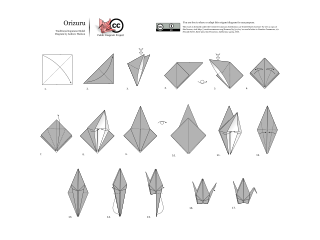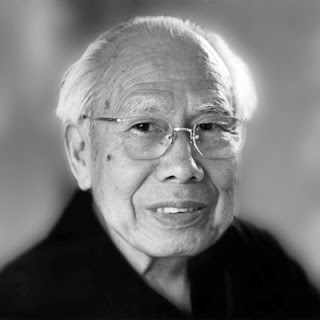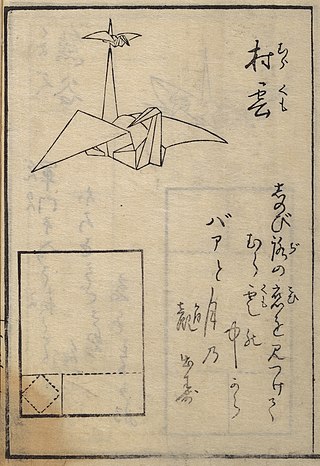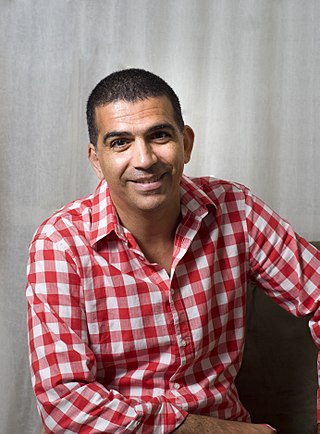
Origami is the Japanese art of paper folding. In modern usage, the word "origami" is often used as an inclusive term for all folding practices, regardless of their culture of origin. The goal is to transform a flat square sheet of paper into a finished sculpture through folding and sculpting techniques. Modern origami practitioners generally discourage the use of cuts, glue, or markings on the paper. Origami folders often use the Japanese word kirigami to refer to designs which use cuts.

The Yoshizawa–Randlett system is a diagramming system used to describe the folds of origami models. Many origami books begin with a description of basic origami techniques which are used to construct the models. There are also a number of standard bases which are commonly used as a first step in construction. Models are typically classified as requiring low, intermediate or high skill depending on the complexity of the techniques involved in the construction.

The discipline of origami or paper folding has received a considerable amount of mathematical study. Fields of interest include a given paper model's flat-foldability, and the use of paper folds to solve up-to cubic mathematical equations.
Peter Engel is an American origami artist and theorist, science writer, graphic designer, and architect. He has written several books on Origami, including Origami from Angelfish to Zen, 10-Fold Origami: Fabulous Paperfolds You Can Make in Just 10 Steps!, and Origami Odyssey.

Robert Harbin was a British magician and author. He is noted as the inventor of a number of classic illusions, including the Zig Zag Girl. He also became an authority on origami.

Chinese paper folding, or zhezhi, is the art of paper folding that originated in medieval China.

Robert James Lang is an American physicist who is also one of the foremost origami artists and theorists in the world. He is known for his complex and elegant designs, most notably of insects and animals. He has studied the mathematics of origami and used computers to study the theories behind origami. He has made great advances in making real-world applications of origami to engineering problems.

Akira Yoshizawa was a Japanese origamist, considered to be the grandmaster of origami. He is credited with raising origami from a craft to a living art. According to his own estimation made in 1989, he created more than 50,000 models, of which only a few hundred designs were presented as diagrams in his 18 books. Yoshizawa acted as an international cultural ambassador for Japan throughout his career. In 1983, Emperor Hirohito awarded him the Order of the Rising Sun, 5th class, one of the highest honors bestowed in Japan.
Nick Robinson is a British paperfolder. He was awarded the Sydney French Medal in 2004 by the British Origami Society and is an Honorary Member and President of the British Origami Society.

A fortune teller is a form of origami used in children's games. Parts of the fortune teller are labelled with colors or numbers that serve as options for a player to choose from, and on the inside are eight flaps, each concealing a message. The person operating the fortune teller manipulates the device based on the choices made by the player, and finally one of the hidden messages is revealed. These messages may purport to answer questions, or they may be activities that the player must perform.

The Sonobe module is one of the many units used to build modular origami. The popularity of Sonobe modular origami models derives from the simplicity of folding the modules, the sturdy and easy assembly, and the flexibility of the system.

The history of origami followed after the invention of paper and was a result of paper's use in society. In the detailed Japanese classification, origami is divided into stylized ceremonial origami and recreational origami, and only recreational origami is generally recognized as origami. However, this page describes the history of both ceremonial and recreational origami.
Lillian Vorhaus Oppenheimer was an origami pioneer from New York City. Becoming a leading figure in the art form in her later years, Oppenheimer is credited with popularizing it in the United States. She adopted the Japanese word origami instead of the English paper folding, and the foreign term became established in the English language due to her efforts.

Kawasaki's theorem or Kawasaki–Justin theorem is a theorem in the mathematics of paper folding that describes the crease patterns with a single vertex that may be folded to form a flat figure. It states that the pattern is flat-foldable if and only if alternatingly adding and subtracting the angles of consecutive folds around the vertex gives an alternating sum of zero. Crease patterns with more than one vertex do not obey such a simple criterion, and are NP-hard to fold.

Éric Joisel was a French origami artist who specialized in the wet-folding method, creating figurative art sculptures using sheets of paper and water, without the use of any adhesive or scissors.
Ligia Montoya was an Argentinian paper-folding artist, who played an important role in all aspects of the 'golden age' of the international origami movement from the 1950s, from which developed modern artistic origami—that is, innovative paper-folding exploring a variety of different approaches, rather than repeating limited traditional figures.

George Rhoads was a contemporary American painter, sculptor, and origami master. He was best known for his whimsical audiokinetic sculptures in airports, science museums, shopping malls, children's hospitals, and other public places throughout the world.

Ilan Garibi is an Israeli origami artist and designer. He started his way in the world of art and design as a paper origami artist, and today also designs furniture, jewelry and works of art out of a variety of materials, such as metals, wood, and glass. He masters an origami genre called Tessellation. During 2012 he co-established Origamisrael, the Israeli origami artists' organization, and he is its chairman ever since. He is an author of several books in the fields of origami and puzzles. In September 2019, Garibi presented a TEDx talk as part of TEDxPaloAltoSalon.
Tomohiro Tachi is a Japanese academic who studies origami from an interdisciplinary perspective, combining approaches from the mathematics of paper folding, structural rigidity, computational geometry, architecture, and materials science. His work was profiled in "The Origami Revolution" (2017), part of the Nova series of US science documentaries. He is a professor at the University of Tokyo.













